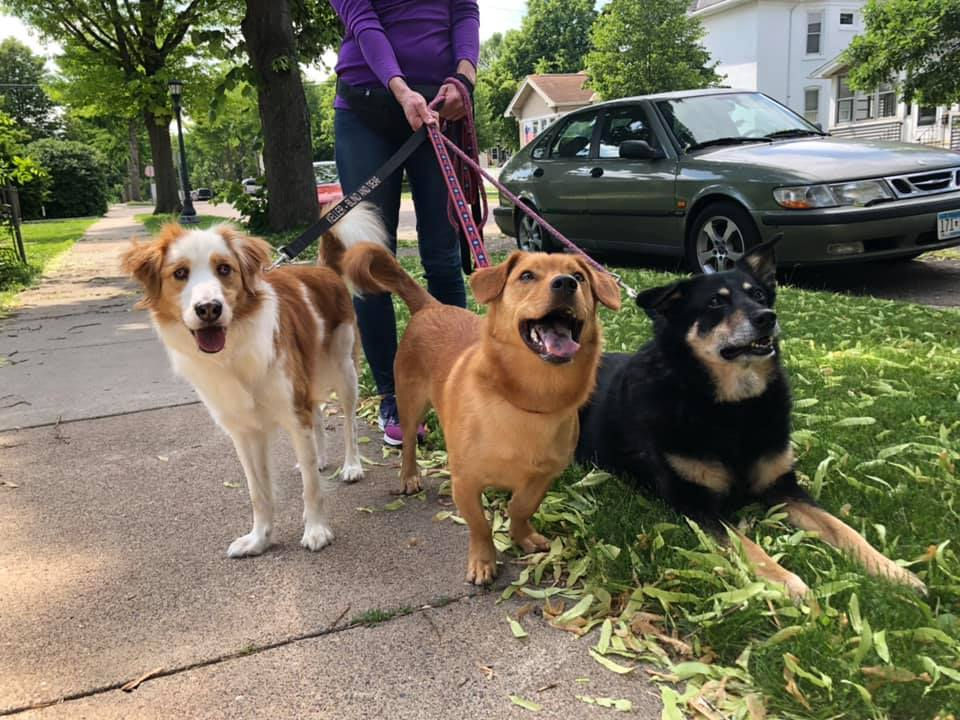5 Tips for Keeping Your Dog Calm During Walks
- Breanna Pederson

- Apr 30, 2024
- 3 min read
Updated: May 15, 2024
Introduction
Every dog owner knows the joy of a relaxing walk with their furry friend. However, if your dog gets anxious or overly excited during walks it can turn this enjoyable experience into a stressful one. That's where our 5 Tips for Keeping Your Dog Calm During Walks come into play.
The Benefits of a Calm Walk
A calm walk not only benefits your dog's physical health but also their mental well-being. It provides an opportunity for them to explore their surroundings, socialize with other dogs, and bond with you, their owner.
Understanding Your Dog's Behavior
To effectively keep your dog calm during walks, it's crucial to understand their behavior and recognize signs of stress or anxiety.
Signs of Stress and Anxiety
- Panting excessively
- Whining or whimpering
- Pacing or circling
- Avoiding eye contact
How Dogs Communicate
Dogs communicate through body language, vocalizations, and behavior. Understanding these signals can help you respond appropriately and address any concerns before they escalate.
Creating a Calm Environment
Setting the stage for a calm walk starts before you even step out the door.
Pre-Walk Preparation
Prepare for the walk by ensuring your dog has relieved themselves, and they are in a calm state. This can be achieved through play or relaxation techniques.
Choosing the Right Walking Gear
Selecting the appropriate walking gear, such as a comfortable harness and leash, can make a significant difference in your dog's comfort and behavior during walks.
Techniques for Calming Your Dog
Utilize positive techniques to encourage calm behavior and reinforce your bond with your furry friend.
Positive Reinforcement
Reward calm behavior with treats, praise, or toys to encourage your dog to remain relaxed and focused during walks.
Calming Commands
Teach your dog calming commands like "sit" or "stay" to redirect their attention and help them relax when they become anxious or overly excited.
Consistency is Key
Consistency in training and routine can help establish a calm and enjoyable walking experience for both you and your dog.
Establishing a Routine
Creating a consistent walking schedule can help your dog anticipate and prepare for their daily walks, reducing anxiety and excitement.
Building Trust with Your Dog
Building trust through positive interactions and consistent training can help your dog feel secure and confident during walks.
FAQs
Q: What should I do if my dog pulls on the leash during walks?
A: Use positive reinforcement techniques and consider using a no-pull harness.
Q: How can I help my dog socialize with other dogs during walks?
A: Gradually introduce your dog to new dogs in a controlled environment and reward positive interactions.
Q: Is it okay to bring treats on walks?
A: Yes, bringing treats can be beneficial for rewarding calm behavior and encouraging positive responses.
Q: How often should I walk my dog to keep them calm?
A: Establish a consistent walking schedule based on your dog's breed, age, and energy level.
Q: What should I do if my dog becomes anxious during walks?
A: Remain calm, use calming techniques, and consider seeking advice from a professional dog trainer or veterinarian.
Q: Can I use toys to distract my dog during walks?
A: Yes, interactive toys can help redirect your dog's attention and provide mental stimulation.
Conclusion
Implementing our 5 Tips for Keeping Your Dog Calm During Walks can transform your walks into enjoyable bonding experiences. With patience, understanding, and consistency, you and your furry friend can enjoy stress-free walks together.





Comments